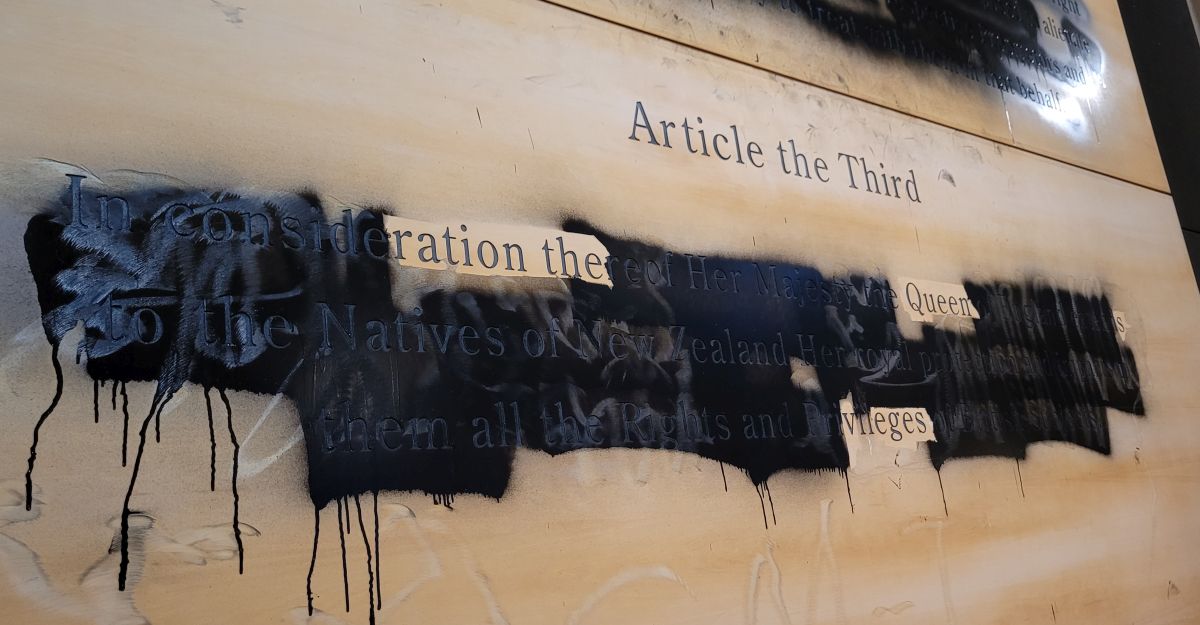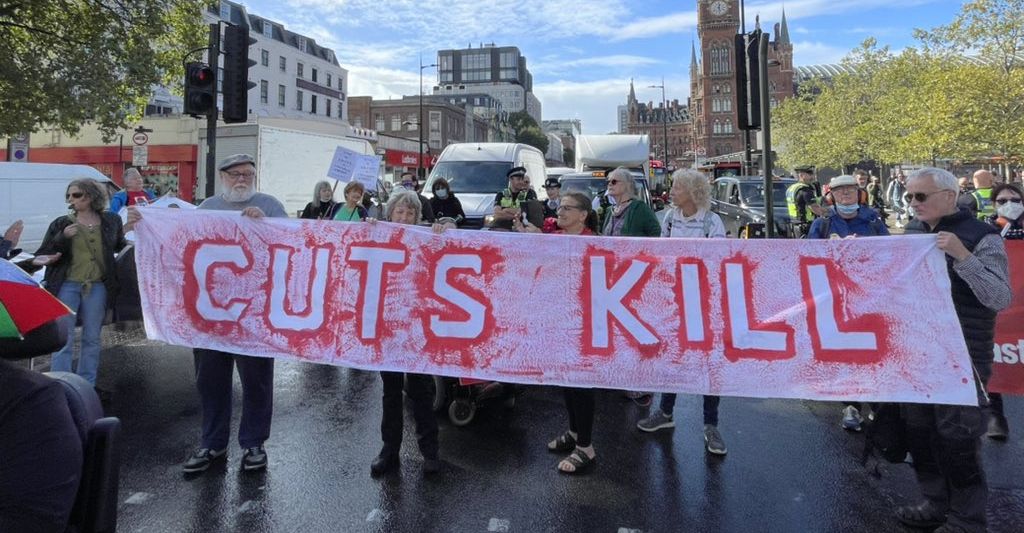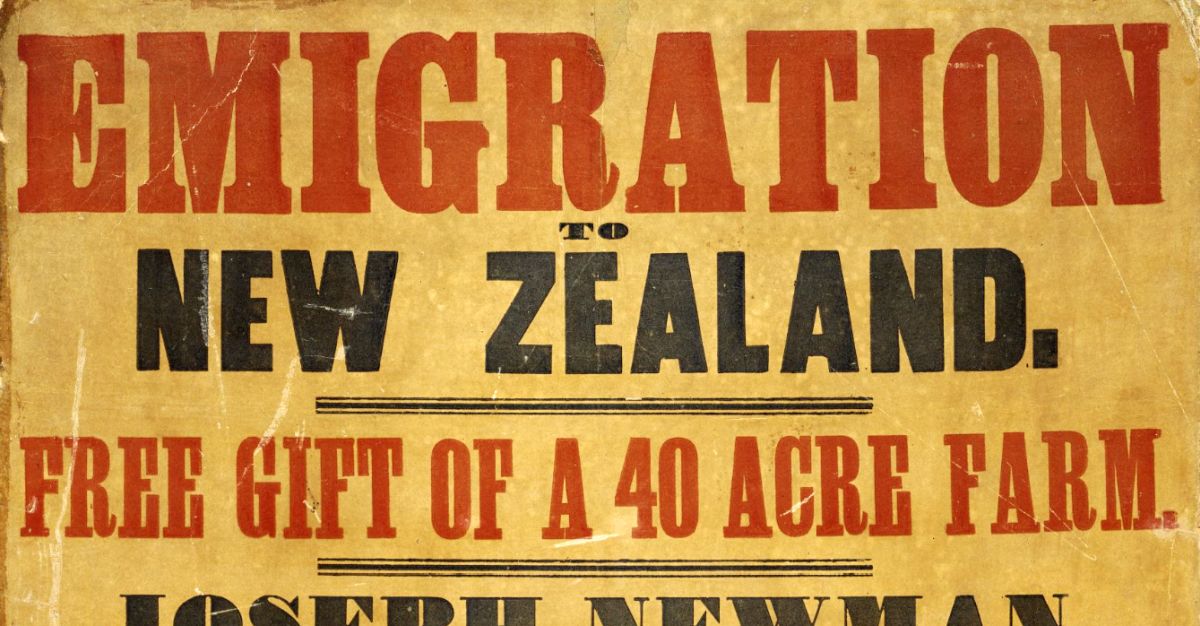On the 11th of December 2023, a group of Te Waka Hourua activists abseiled down the interior walls of the national museum of New Zealand/Te Papa Tongarewa in Wellington and redacted one of the panels in the permanent exhibition Te Tiriti o Waitangi: Signs of a Nation. Originally installed in 1998, the exhibition featured two large wooden panels hanging opposite one another. One reproduced the text of Te Tiriti o Waitangi. The other, the English version of the treaty drafted in the same year.
Although the placement of the panels implied an equivalence between the two treaties, the activists — echoing legal experts and academics — later reminded the media that the English version of the treaty is not a translation of Te Tiriti, but in fact a distinct document. In 1840, eight copies of Te Tiriti o Waitangi were collectively signed by representatives of the British Crown and over 500 rangatira; (chiefs), while the English version drafted by Governor William Hobson was signed by only 39 rangatira. Whereas Te Tiriti — the only legitimate, and thus legally binding document — asserts Māori sovereignty, the English treaty claims that land was ceded to the Crown (the word used in the first Article of Te Tiriti is kawanatanga, which translates to “governance” rather than “sovereignty”).
Following the redaction, the third Article of the Treaty simply read, “ration the Queen’s veges.”
Te Waka Hourua’s intervention is striking for several reasons. Not only does it contest the naturalisation of the English treaty by drawing on the broader aesthetics of censorship (and thus directing attention to operations of state power and control); but it does so by turning to the particular aesthetics of redaction.
In a redacted document, information is not missing, but occluded: the document defers to a secondary authority, someone “in the know”. Redaction evokes classified files, whistleblowers, and government secrets, as well as the frustrating logic of the government bureaucracy it has come to represent. (Here it’s worth noting that Te Waka Hourua’s redaction of the English treaty followed numerous requests for Te Papa to update the exhibition with an accurate translation. Just this week, the museum has replaced the panel with a temporary display.)
The poet Craig Dworkin has observed that redaction is additive, rather than subtractive. The dense black lines of redaction open, in Dworkin’s words, “a space in which the work cleaves between two moments of composition, [to] establish a second system of signification.” Instead of decreasing the English treaty’s signifying ability, Te Waka Hourua’s ‘unreadable’ erasures add an opaque layer of signification, which itself gestures to the non-equivalent “doubleness” of the two treaties. With this in mind, I can’t help reading the activists’ decision to leave certain words visible as a poetic gesture: the words demand to be read.
*
The phrase erasure poetry refers to “a poetic form in which a poet blacks out or in some way erases words from a preexisting source to create new poems.” By erasing, obscuring, excising, deleting, or redacting a source text — be it a novel, newspaper, or another poem — erasure poets create meaning in novel ways. In this sense, erasure poetry always involves a degree of appropriation. An erasure poem points beyond its edges, both to its source text(s) and to the network of significations within which this text is situated. For example, Ronald Johnson’s experimental Radi Os (1977) erases the majority of John Milton’s Paradise Lost to make a new poem possible. Yet this act of erasure — invoking presence through absence — necessarily situates Johnson’s poem in a relation with Milton’s, and subsequently with the latter’s socio-historical world. While this is true to an extent for all intertextuality, erasure poetry that redacts its source also indexes the ways in which information is produced, mediated, and constrained — in other words, the very conditions of its readability. Reading an erasure poem means reading what is ‘readable’ with and against what is not.
Turning a poetic eye to Te Waka Hourua’s intervention, consider the words and phrases that materialise against the occluded text of the English treaty. Under “Article the First”, the only legible text alongside the Article’s heading, is ‘no’: a short, sharp syllable that refuses the article’s contents. Under “Article the Second”, the noun phrase “Her Majesty the Queen of England” is the only text that escapes erasure. “Article the Third” is subjected to the most complex redaction, using intralinear gaps to compose, ‘ration / the Queen’s / veges’ — an imperative that inverts the Crown’s capacity to feed or starve.
Reading Te Waka Hourua’s amended Treaty alongside a reproduction of the original document reveals that the word “ration” is the suffix of “consideration”, a noun that typically refers to a period of careful thought or contemplation. However, “consideration” can also refer to a payment or reward. In a legal contract, it defines anything given by one party in exchange for the promise of another.
At the end of the line, the word “veges” is constructed using the v, e, g, e, and s of “Privileges”. A close reading draws out the connections between colonialism, agriculture, and primitive accumulation. The signing of Te Tiriti was not only an assertion of British sovereignty. Since at least 1839, The New Zealand Company — an independent business acting without the authorisation of the British Government — had been buying and trading Māori land. The Treaty was a government ‘intervention’ that gave the Crown exclusive purchasing-rights to Māori owned land, and therefore access to fertile farmland, flax, rimu and kauri timber, as well as other valuable, therefore tradeable, commodities. Crucially, the “privileges” afforded to Māori in this new world of imperial capitalism did not extend to the recognition of tino rangatiratanga (a phrase in the Te Tiriti whose meanings include self-determination, sovereignty). The imperative “ration” thus ironises the fact that the “consideration” paid by the Crown (the ‘Privileges’ and protections of the Queen) was fixed at a reduced rate.
Despite the illegitimacy of the English Treaty, it has occupied a central position in Aotearoa’s history. Since the opening of the Signs of a Nation exhibit in 1998, the English version had been hanging (or hiding) in plain sight in the nation’s leading museum, visible only to those who have felt the material effects of its naturalisation. It is thus by redacting the English text of the Treaty — by transforming it into apertures of signatory excess — that the invisible becomes, paradoxically, visible. With their intervention, Te Waka Hourua thus contest the Crown’s claim to sovereignty by obscuring the naturalising claim that underwrites it. The word “veges” may therefore be directed at those for whom the facticity of the English treaty can be invisible — who, bestowed with the Queen’s privileges, can afford not to see, and certainly not to read.
However, this “denaturalisation” of the treaty also draws attention to the material conditions of its production — both the writtenness of writing and the materiality of colonialism’s “civilising” documents. Tracing a line from poetry to legislative document emphasises the ways that written language brings worlds into being, both on the page and in the colony — what might be called the “writtenness of colonial world-making”. In their literal expression, the “re-visiblised” letters of Te Waka Hourua’s poem simultaneously elicit their littoral expression (where the curve of an O prints a ghostly boot in the sand, A is held akimbo to block the harsh Antipodean sun, and C carries the settler into the future, onto other shores). This expression marks the time of settler-colonialism, which looks to the future to erase the past, collapsing both temporalities into an absolute — and therefore forever re-inscribable — present.

With their fuzzy and imperfect edges, Te Waka Hourua’s erasures also invoke the ink of Governor William Hobson’s fountain pen, its “literal expression”, and the spectre of his writing body — a body that should not have been where it was. But these spray-paint erasures also index the bodies of the activists who, strictly speaking, should not have been abseiling down the wall of a Crown entity. Theirs are bodies writing “out of place” to show how they were historically written out of place.
If the invention of the movable-type printing press in 1440 ignited a revolution in thought, this revolution had its own side-effects. In The White Possessive, Aileen Moreton-Robinson points out that 1492 is generally identified by historians as the year that imperialism began “taking possession of other people, their land and resources” — just fifty-two years after Gutenberg’s innovation. As well as codices and documents, the printing press enabled maps to be mechanically reproduced rather than drawn by hand, which expediated the “Golden Age of Discovery”. Writing about the transatlantic slave trade, the poet M NourbeSe Philip has also observed in her book Zong! that written language — and by extension, the technologies of print that made its dissemination possible — “was and is integral” to the European enlightenment project. For the colonial slave traders, writing was a way to turn people into commodities, and impose order on an otherwise “dark” and unenlightened world.
In drafting the English treaty, the Colonial Office representatives used writing to inscribe difference — to distinguish the British settlers from the colony’s new subjects. By marking a legible difference on an otherwise white page, black ink also comes to stand in for the bodies it singles out. Following Jonathan Senchyne’s argument in his essay “Bottles of Ink and Reams of Paper”, the white page thus operates as a naturalised “structural backdrop”, against which black ink becomes visible content. Writing about nineteenth-century printing technologies (particularly the wood engraving prints popular at the time), Senchyne describes how “the adoption of whiteness as a central metaphor makes paper” — and the writing on it — inextricable from the processes by which blackness becomes difference and whiteness the unmarked center.” The naturalisation of the white page thus provides the codical architecture for the subsequent naturalisation of a black/white binary, where whiteness is the invisibilised norm.
In Te Waka Hourua’s intervention, I read a refusal of this binary. By using black spray paint to erase all but a few words and phrases, the activists transform the figuratively white “backdrop” into the legible difference that stands out against the illegible redaction. Yet it is this redaction’s very illegibility that demands to be read — not as difference, but as a radical contestation of colonial world-making.

This piece is sponsored by CoPower, Australia’s first non-profit energy co-operative. To find out more about CoPower’s mission, services, and impact funding, jump online at https://www.cooperativepower.org.au/ or call 03 9068 6036 today.
Images by Giovanni Tiso



